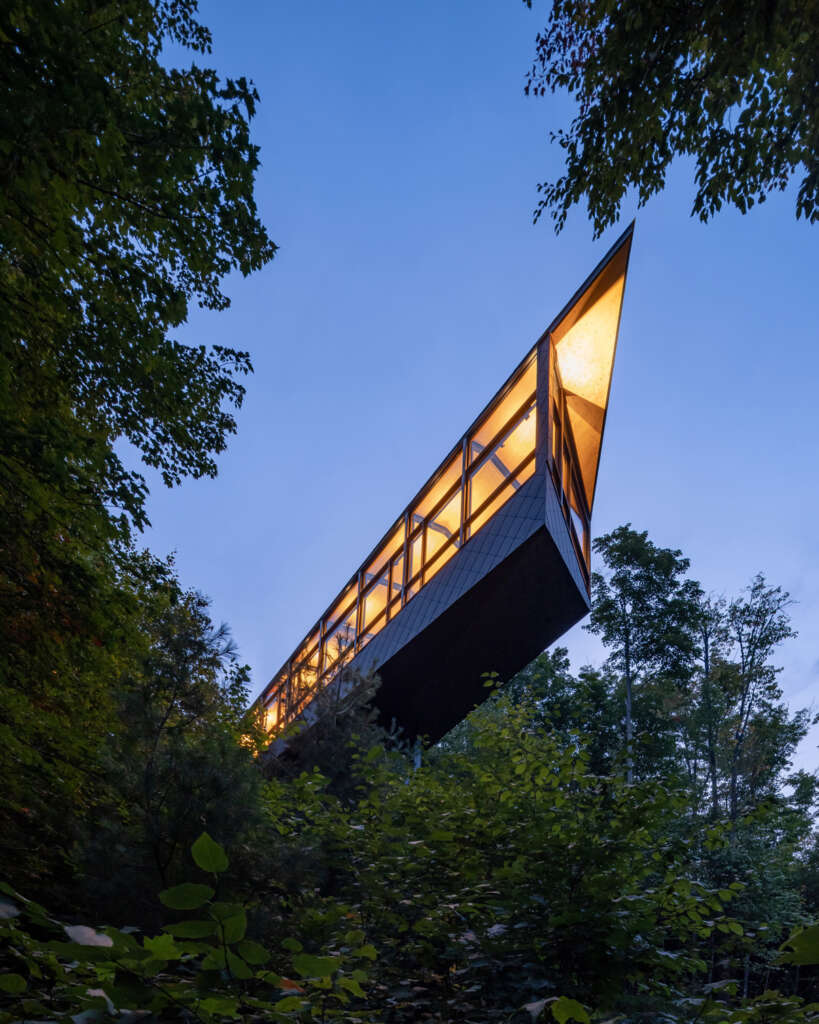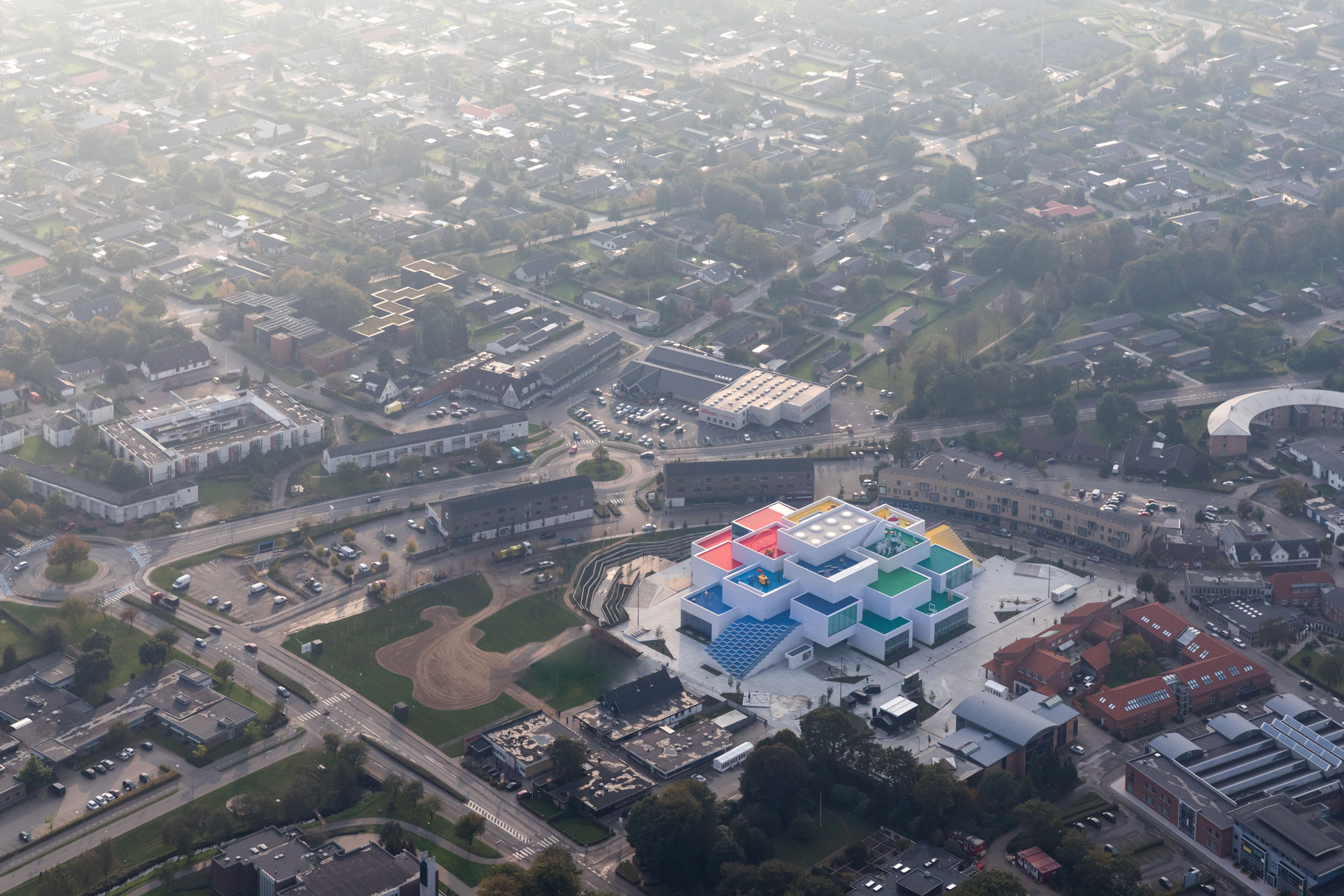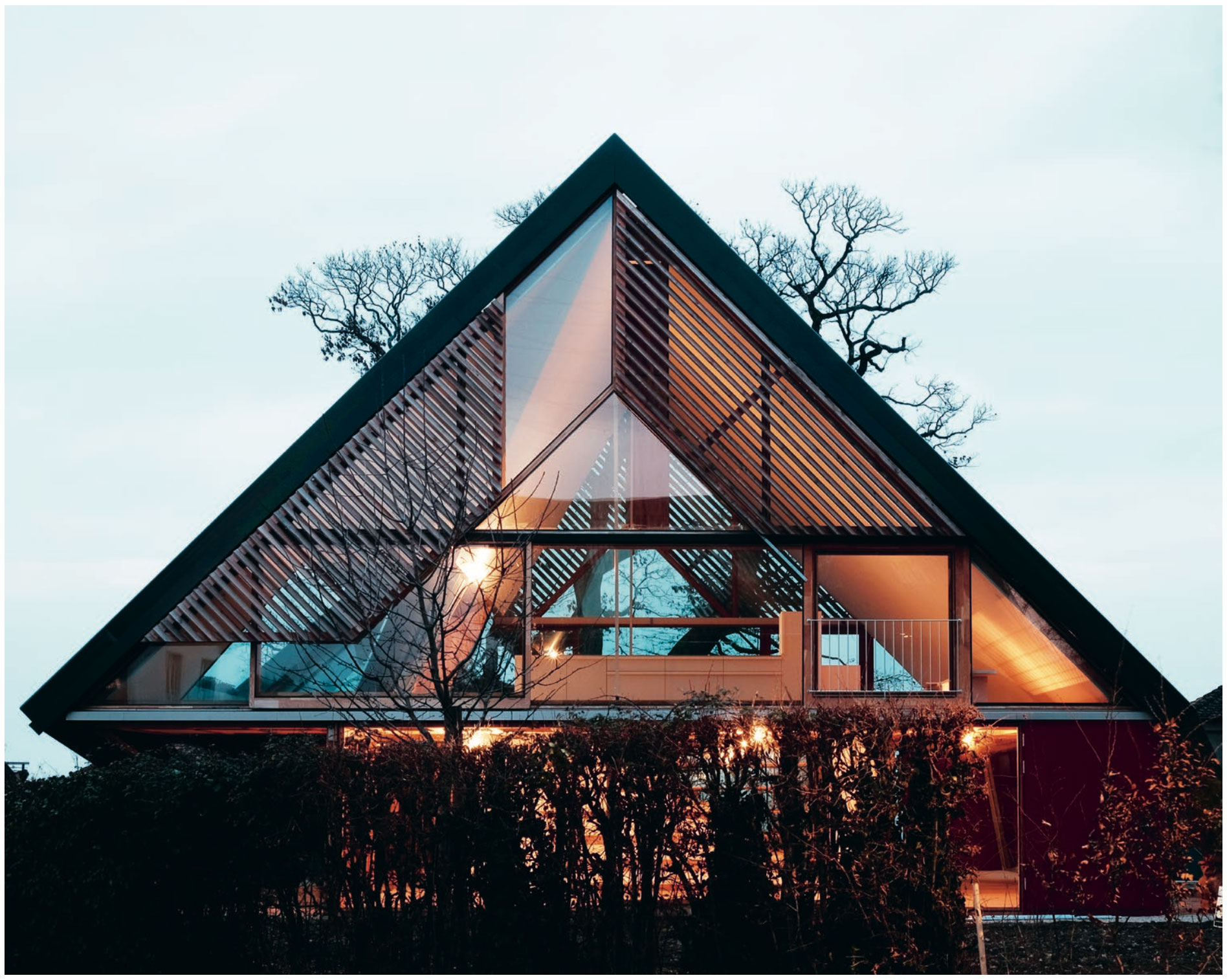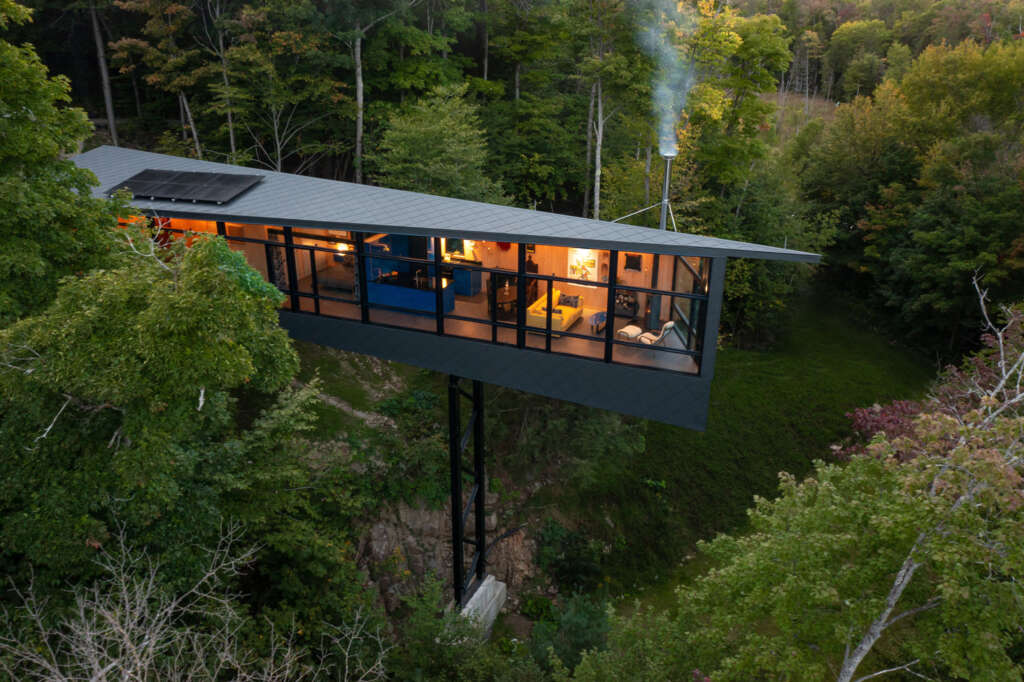
m.o.r.e. CLT Cabin
Architect: Kariouk Architects
Location: Ottawa, Canada
Type: Cabin
Year: 2024
Photographs: Scott Norsworthy
The following description is courtesy of the designers. The paradigmatic North American cottage is romanticized as a log cabin in the wilderness. In reality, these cottages are “woodsy” versions of suburban homes and include every modern convenience. These buildings help to sustain the myth that by appearing to be at one with the land, their owners are making less of an impact on the environment.
The m.o.r.e. CLT Cabin inverts this idea through a separation from the landscape that is much more sustainably constructed than other cottages. This intention to unravel eco-fictions is not one of cynicism, but rather responsible optimism. While all organic environments continue to be degraded, what remains can be engaged more responsibly.
m.o.r.e. CLT Cabin touches the land lightly, engaging flora and fauna as equal partners and tenants. m.o.r.e. CLT Cabin pursues this goal in several ways:
- Interpreting the law creatively to uphold its principles.
- Using a steel mast to reduce the size of the foundation.
- Low-waste cross-laminated timber (CLT) structure.
- Using a “folded” structure for greater tensile strength.
- Off-grid power and high-efficiency heating.
- Creating a home for endangered local bats.
This simple building has no extraneous parts in terms of its task to provide for human shelter. Although it has no extra parts, it does outline ways in which nuanced consideration of legal codes, building technology, structure, and ethics can be brought to bear upon each other, yielding an unexpected outcome.
The appearance of this “simple” home did not emerge in a conventional design-studio sense, but as the consequence of entwining the basic knowledge we have in terms of structures, technology, and professional practice.
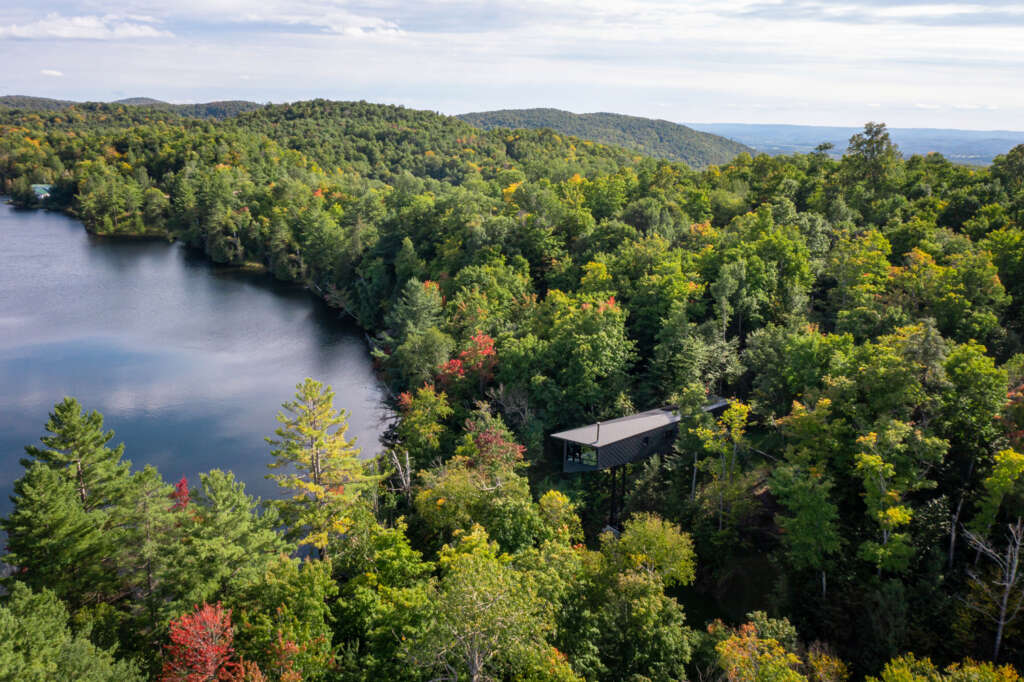
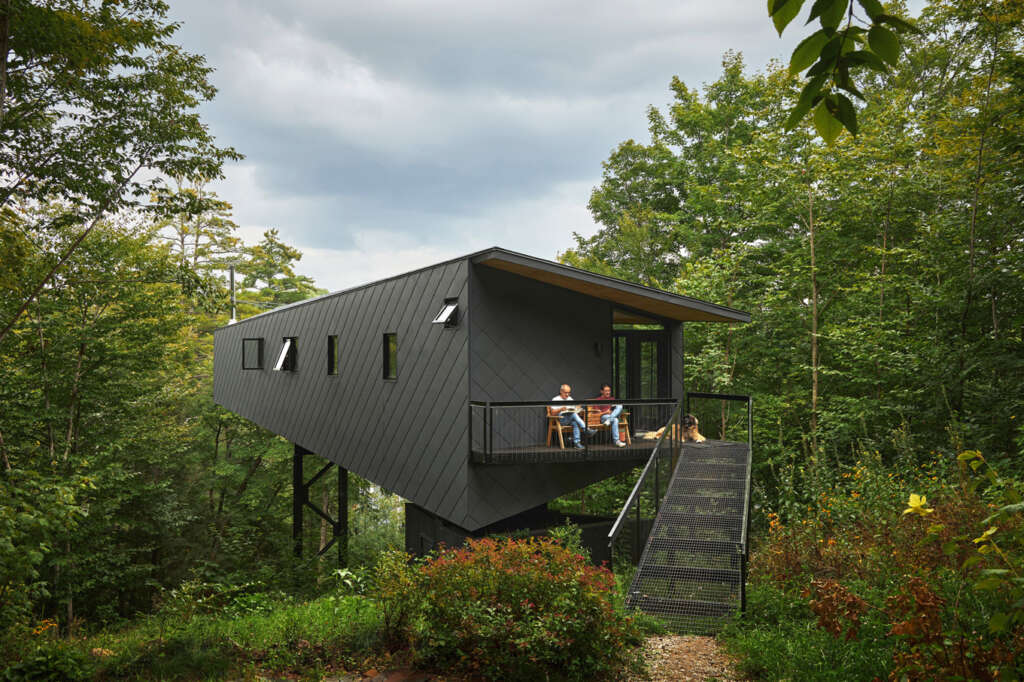
About the Name
The project’s moniker, m.o.r.e., is derived from the first initial of the clients’ grandmothers. These 4 women, all immigrants with very difficult but joyous lives, were instrumental in nurturing skillsets whereby more was always done with less, and graciously so.
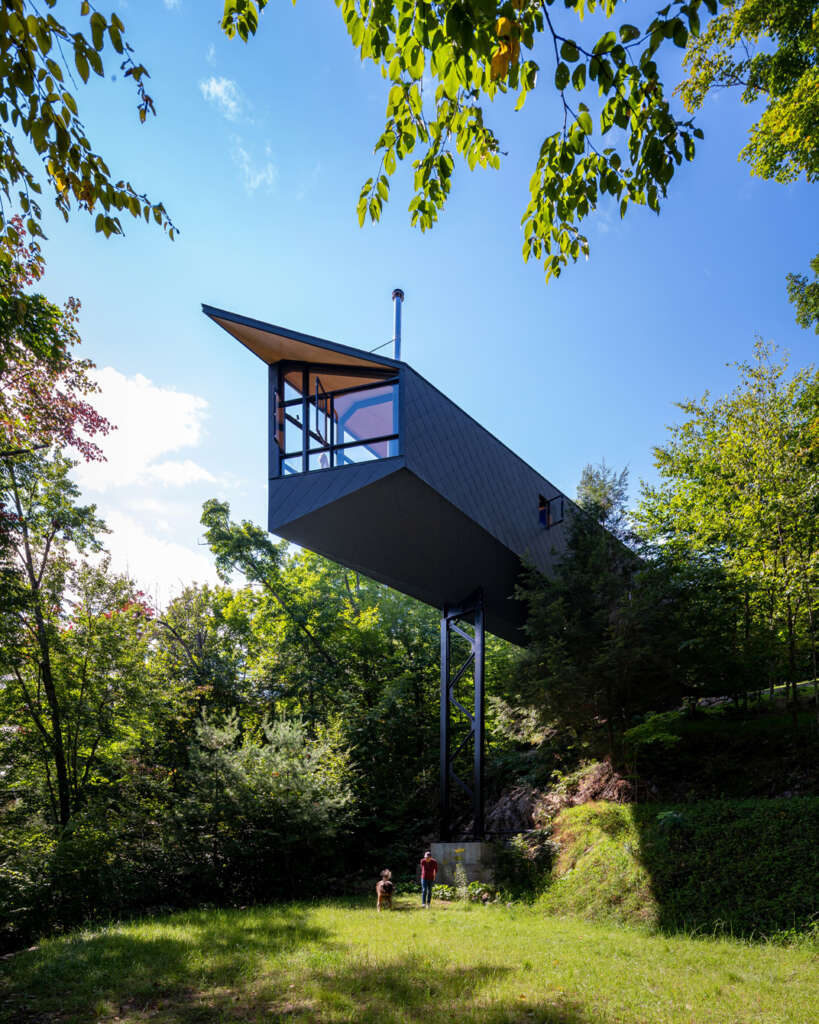
Interpreting the Law with Finesse
Zoning for this area required a 100-foot (30-metre) setback from the lake. A cliff face at that 100-foot mark was incorporated into the design, when normally it would have been blasted.
To minimize harm to the immediate hillside and forest, a zoning variance was pursued to allow the front of m.o.r.e. CLT Cabin to hover over the 75-foot (30-metre) mark. A 2-year legal challenge was won and the solution that spoke to the spirit of setbacks was accepted.
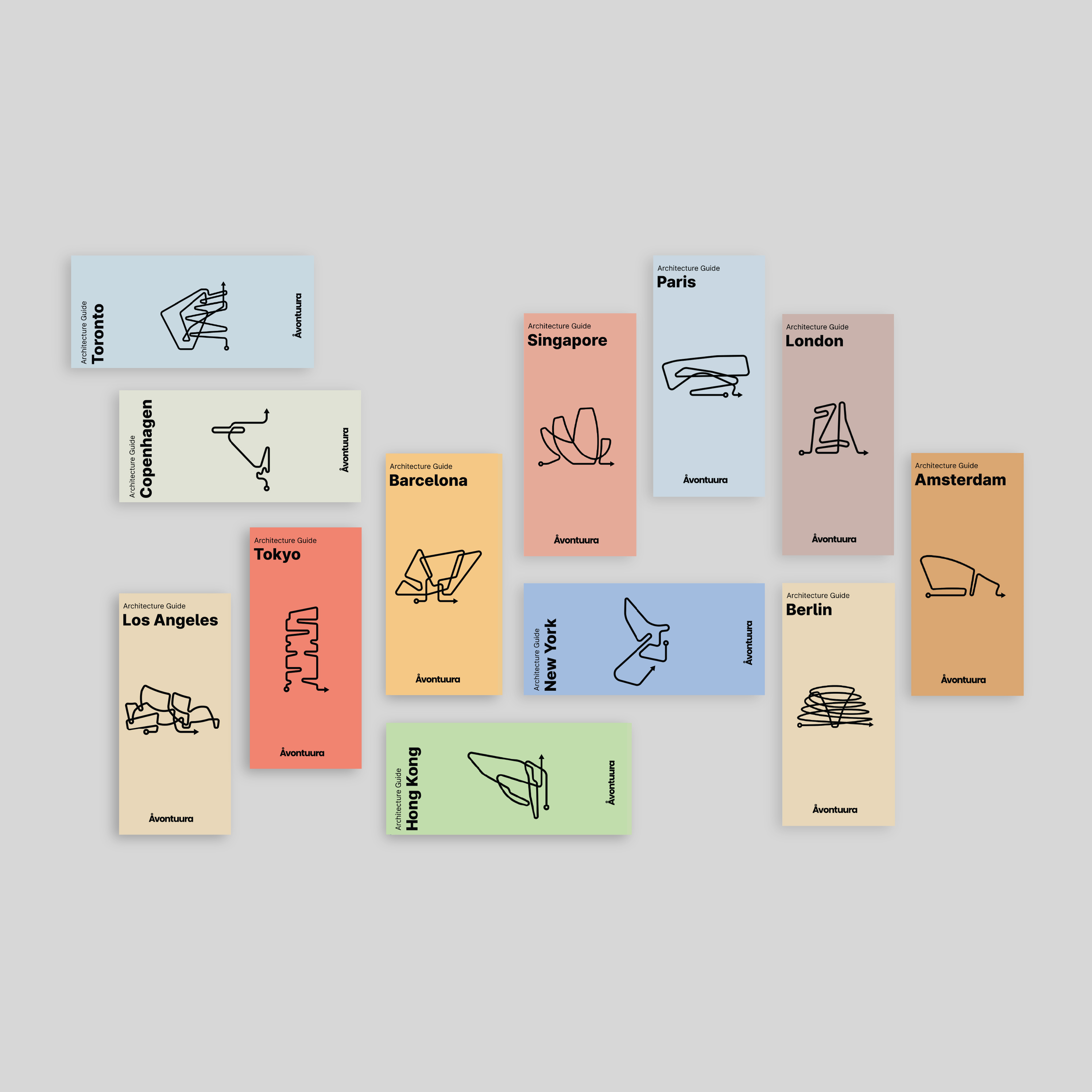
Introducing the Wandering Series:
Architecture Guides for Architecture Lovers
Explore all our guides at avontuura.com/shop
The Mast
The technical solution to the environmental issue involved a single concrete footing and a steel “mast” placed within the required setback.
Avoiding a conventional large foundation preserved the watershed’s flora and soil, preventing erosion, as did elevating the construction zone above the hillside. As concrete is one of the biggest emissions sources in construction, reducing its use dramatically lowered the project’s carbon footprint.
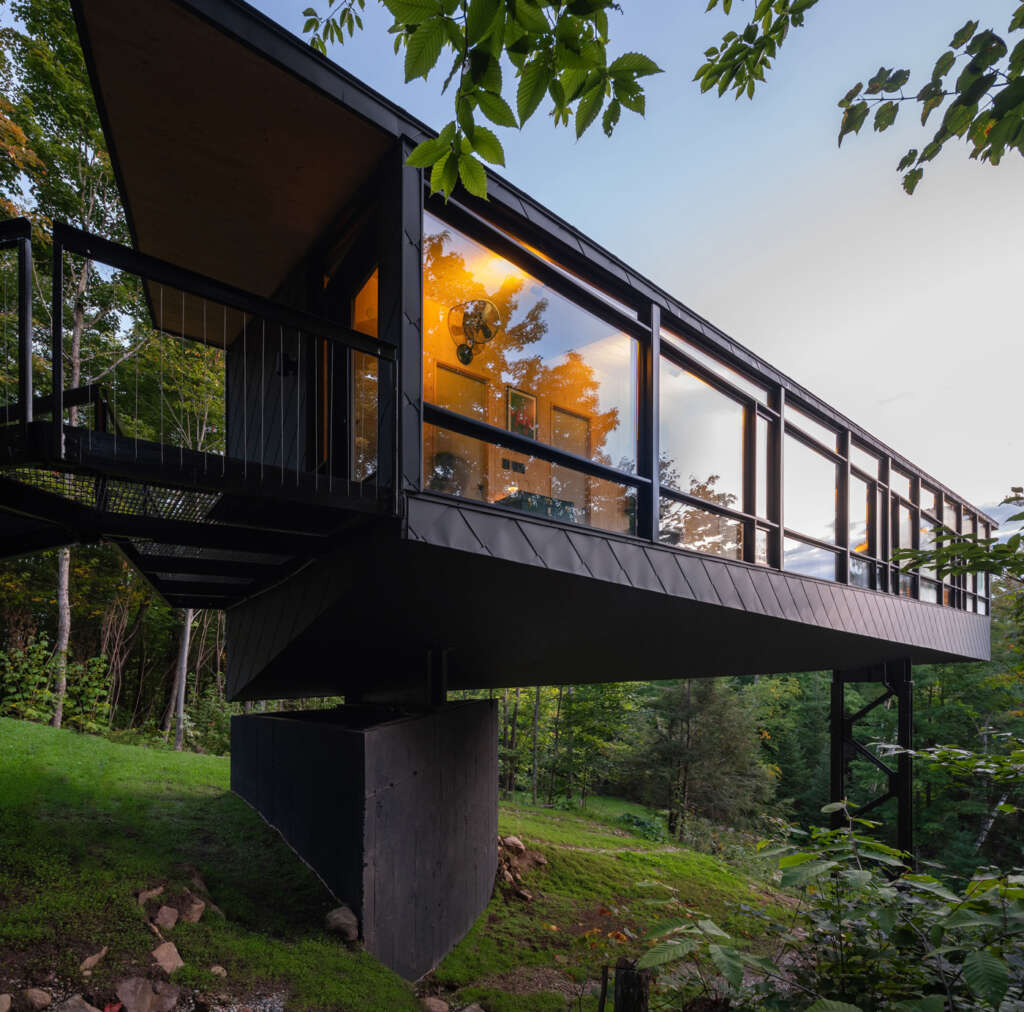
m.o.r.e. Than One Way to Skin a Home
m.o.r.e. CLT Cabin is built with suitably-sourced CLT panels and glulam beams.
The CLT was entirely milled offsite and then hoisted into place, minimizing construction time and avoiding damage to the landscape by the maneuvering of construction machinery. All building materials were sized for a smaller short-trailer truck to prevent the felling of trees along the road.
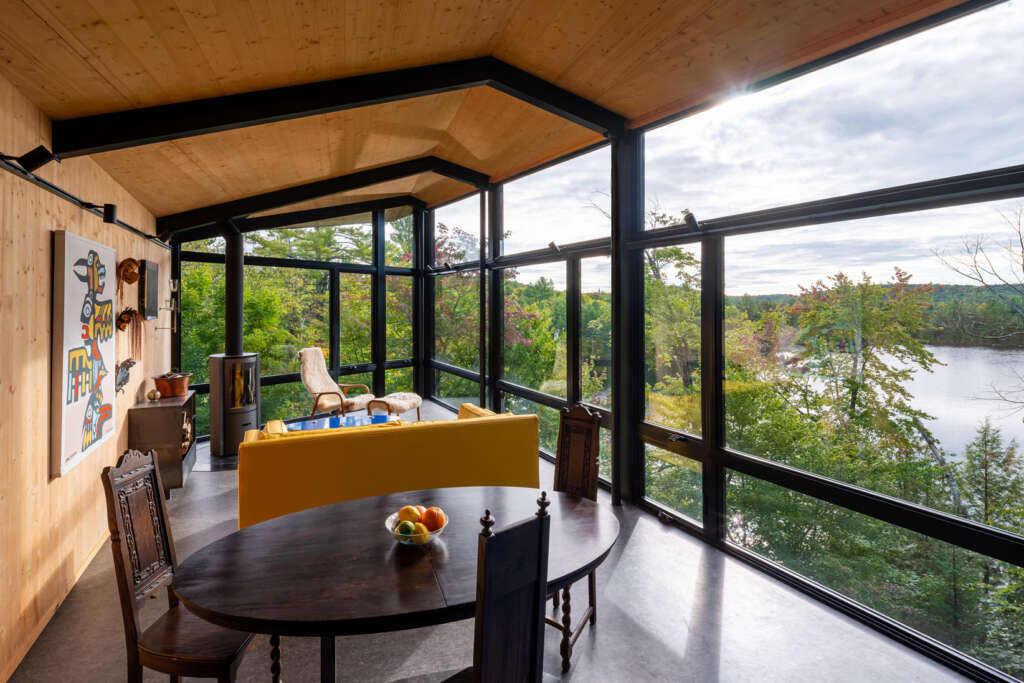
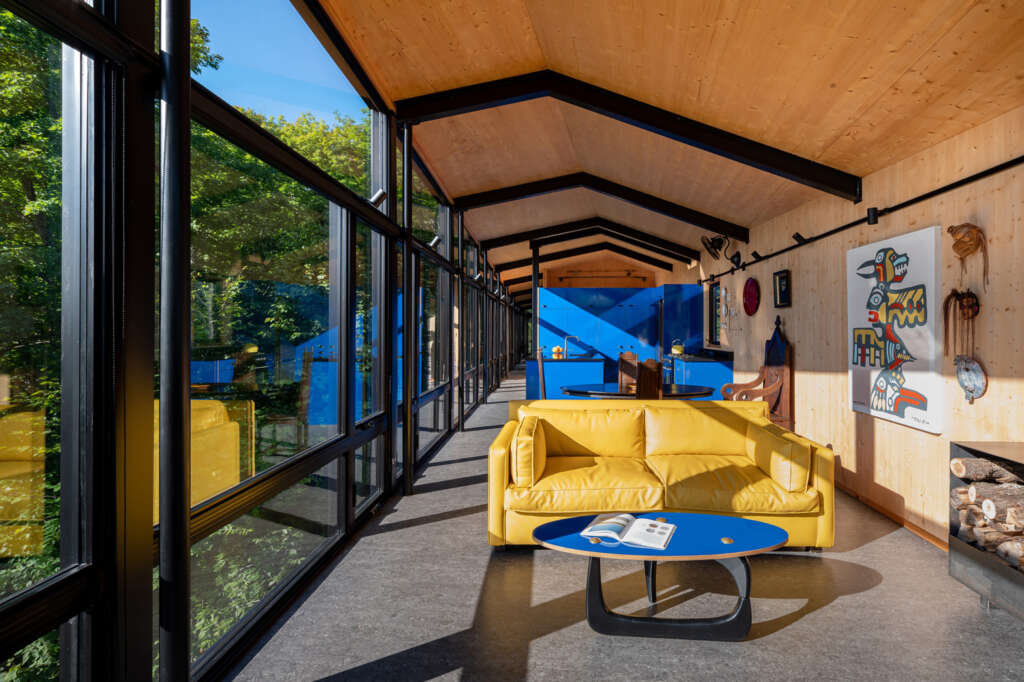
Cabin-as-Beam
m.o.r.e. CLT Cabin’s environmental considerations yielded structural innovation. Meeting the zoning variances via the cantilever would normally require the use of glu-lam, which is very strong under tension, but would have required wasteful structural framing. The challenge became to develop a structural strategy to use the CLT panels in tension.
Conventional 5-ply CLT is too heavy to support itself over longer spans. The solution used thinner 3-ply CLT, with structural capacity ensured through “folding” (just as paper gains strength when folded).
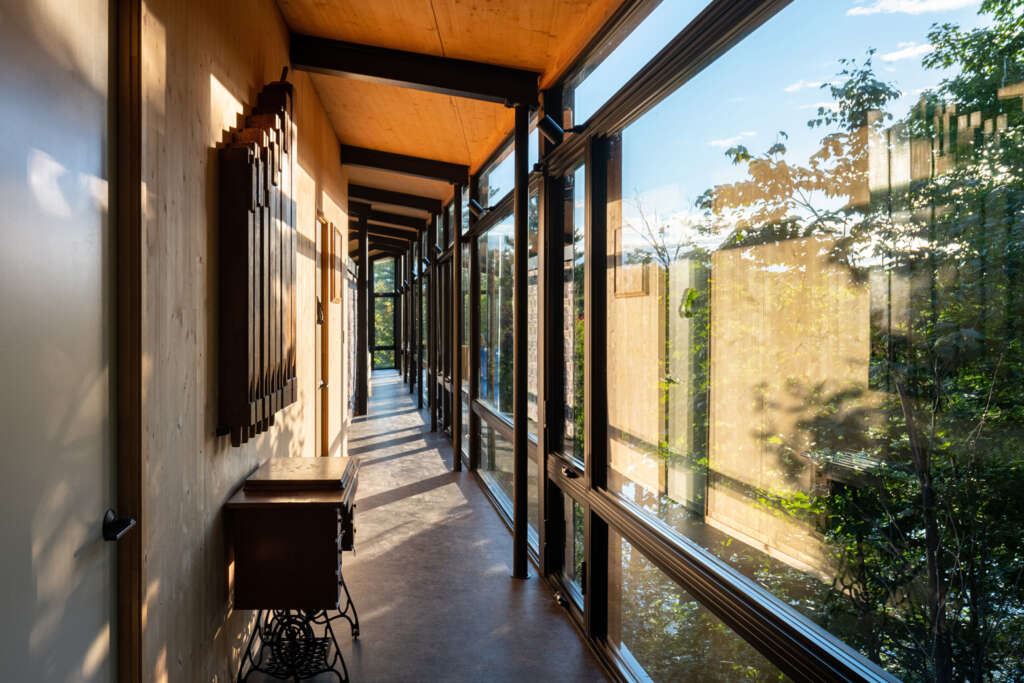
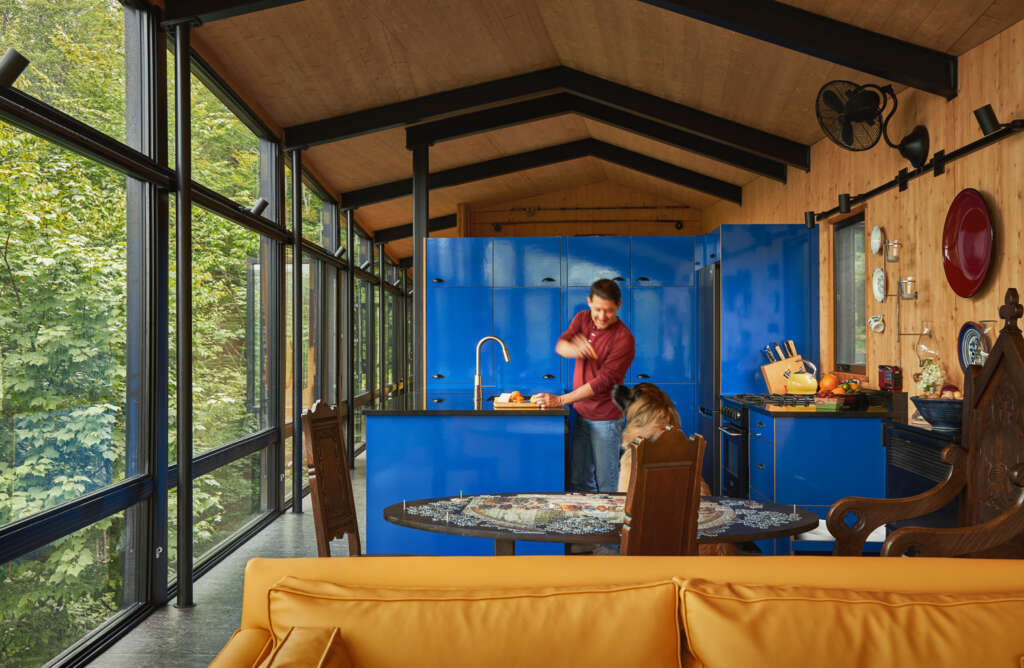
Off-Grid
The home is powered by solar units. For cooling, the cottage makes excellent use of breezes and cross-ventilation through its 12-foot interior height and extra height above the lake. Even though the cabin is elevated about 20m above the ground, its south-facing glazed wall is shaded in the warmer months by the surrounding tree canopy. In winter, the bare branches allow plenty of sunlight to enter through the large windows and helps to heat the home.
The CLT provides good R-value and thermal comfort due to its mass and its air-tightness, which results from precise joinery. Heat is provided by a high-efficiency “green carbon” wood stove (because wood is not a fossil fuel brought from deep underground, it does not add to the existing carbon cycle).
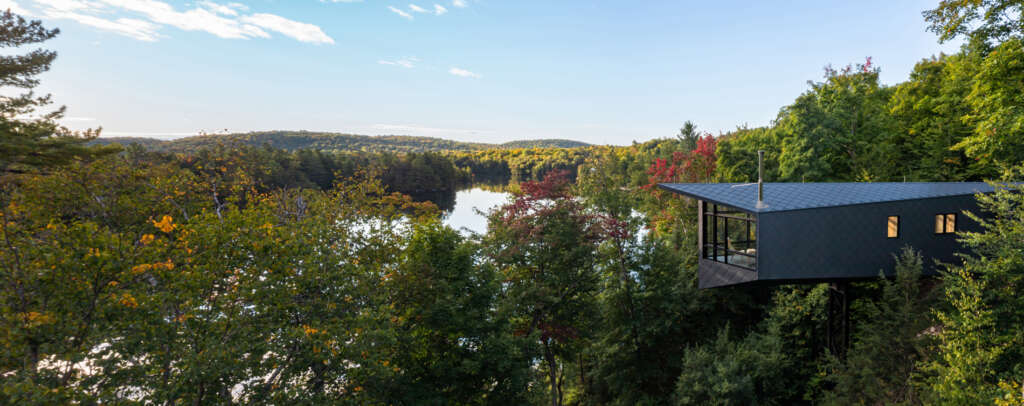
Brown Bats: Inviting Over the Neighbours
One goal of the home was to create extensive lodging for endangered brown bats. Bat pods were integrated into the mast to provide safety from climbing predators and a clear flight path to the lake.
